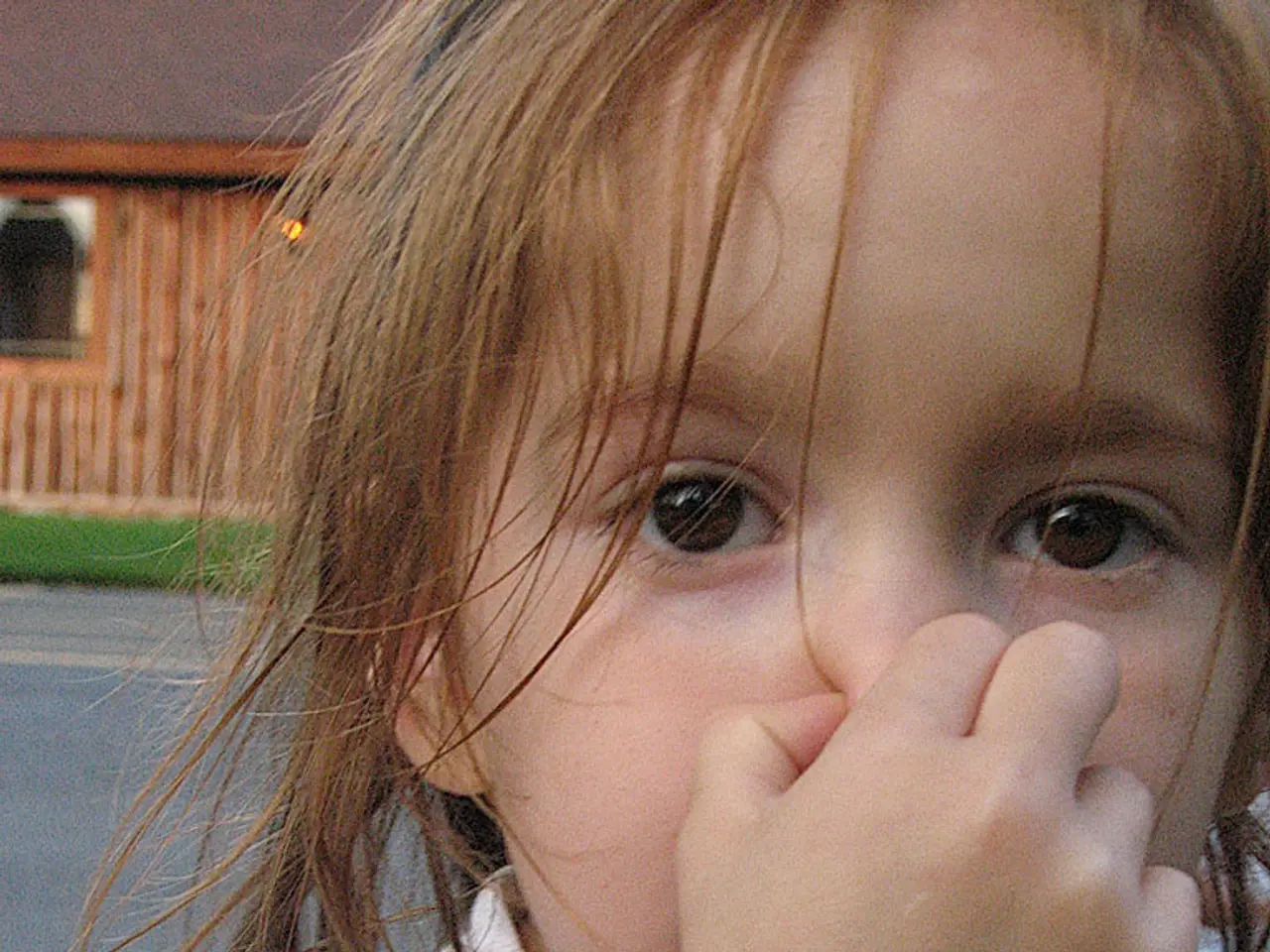Kids' Allergy Remedies: Varieties, Substitutes, and Detailed Information
In the realm of childhood health, allergy treatments play a crucial role in ensuring the well-being of millions of children worldwide. This article aims to provide a clear and concise overview of various allergy treatments available for children, along with factors to consider when choosing the right one.
Most common allergies, such as allergic rhinitis, can cause symptoms like a runny nose, sneezing, and itchy eyes. Symptomatic medications like antihistamines and decongestants can provide relief when taken during or before exposure to an allergen. Over-the-counter antihistamines, such as diphenhydramine (e.g., Genexa Kids' Allergy), can offer temporary relief from these symptoms. However, it's essential to consider the child's age and weight, as many allergy medications have specific dosing and usage restrictions.
For children with more severe allergies, such as peanut allergy, alternative treatments like immunotherapy may be recommended. PALFORZIA, the first FDA-approved oral immunotherapy for children aged 1 to 17 with peanut allergy, involves daily oral administration of peanut protein in gradually increasing doses under medical supervision. This treatment can reduce the severity of allergic reactions and the risk of anaphylaxis from accidental peanut exposure.
Immunotherapy aims to prevent allergic reactions by gradually exposing a person to larger doses of the allergen under a doctor's guidance. Besides peanut allergy treatment, other forms of immunotherapy (allergy shots or oral treatments) may be used for different allergies. Immunotherapy can provide long-term symptom relief and support behavioural and developmental progress in children, especially when coordinated with healthcare providers and therapists.
Corticosteroids, particularly nasal corticosteroids, can also be an effective treatment option for allergic rhinitis. However, it's essential to note that most corticosteroids require a prescription, and hydrocortisone cream is safe for short-term use on allergic reactions on the skin if a doctor recommends it.
Decongestants, such as xylometazoline (nasal spray), pseudoephedrine, and phenylephrine, do not target the allergic response but help with nasal congestion symptoms by narrowing blood vessels in the nose.
Cromolyn (nasal spray and eye drops) can be used to treat some allergic symptoms, particularly allergic rhinitis and allergic conjunctivitis. Nasal cromolyn seems to have minimal side effects and works effectively when used before symptoms become severe. However, there is not enough data to support the use of cromolyn in children under the age of 2.
Epinephrine, often used in an EpiPen, can reverse the life-threatening symptoms of anaphylaxis. An EpiPen requires a prescription, and a doctor will typically train the child and caregiver on how to use it. Epinephrine is not for daily or long-term use and cannot prevent allergic reactions.
Parents are advised to consult a pediatric allergist before starting any allergy medication or immunotherapy to ensure the treatment aligns with the child’s unique needs and to manage dosing and potential side effects effectively. Factors to consider when choosing allergy medicine include the child’s age and weight, type and severity of allergy, medical supervision requirements, potential side effects and safety, child’s overall health and other conditions, and coordination with other therapies.
Alternative treatments for allergies, excluding life-threatening ones, include avoiding allergens, using air filtration products, and wearing masks. These measures can help reduce exposure to allergens and alleviate symptoms.
In conclusion, navigating allergy treatments for children requires careful consideration of the child's unique needs, type and severity of allergy, age, and overall health. Parents should always consult a pediatrician or allergist before treating children's allergies to ensure the right treatment is chosen and administered safely and effectively.
- Immunotherapy, like PALFORZIA for peanut allergy, can be recommended for children with severe allergies, aiming to prevent allergic reactions by gradually exposing them to increasing doses of the allergen.
- Under medical supervision, PALFORZIA involves daily oral administration of peanut protein, potentially reducing the risk of anaphylaxis from accidental peanut exposure in children aged 1 to 17.
- Antihistamines and decongestants, such as Genexa Kids' Allergy or pseudoephedrine, can provide relief from common allergy symptoms like a runny nose and congestion when taken during or before exposure to an allergen.
- Cromolyn, available as a nasal spray and eye drops, might be used to treat allergic symptoms like allergic rhinitis and allergic conjunctivitis, but it's not recommended for children under 2 due to limited data on its safety and effectiveness.
- Epinephrine, given via an EpiPen, can reverse the life-threatening symptoms of anaphylaxis, but it's not for daily or long-term use and should only be prescribed by a doctor.
- In addition to medication, parents can consider alternative treatments for allergies, like avoiding allergens, using air filtration products, and wearing masks, to help reduce exposure to allergens and alleviate symptoms.




